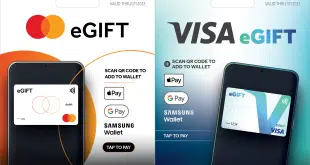For all the publicity surrounding merchant dissatisfaction with payment-acceptance costs, the issue doesn't rank high with online retailers looking into alternatives to bank-issued credit and debit cards, a payment-industry researcher says. E-commerce merchants are adopting, or investigating, such payment providers as PayPal Inc. and Bill Me Later Inc. hoping most of all to hike average order value, according to Bruce Cundiff, senior analyst at Javelin Strategy & Research, Pleasanton, Calif. Chopping acceptance costs by finding alternatives to Visa- and MasterCard-branded cards, it turns out, lags behind order value and three other reasons these merchants cite, says Cundiff, who spoke to online merchants while preparing a recently completed study forecasting alternative-payments growth online. The results surprised the researcher, given the current litigation between retailers and the bank card networks over interchange fees and the frequency with which merchants generally decry the rising costs of accepting general-purpose cards. “What I expected to find is that it's all about cost,” Cundiff says. “We found is that, while [cost] is an important issue, it's not an overriding issue.” Indeed, reducing acceptance costs follows in importance not only average order value but also a desire to reach new customers, marketing and “associated outreach” opportunities, and the chance to engage customers through popular or emerging payment channels, Javelin's research finds. Cundiff predicts that alternatives to bank cards will account for 30% of a $355.3 billion retail e-commerce market in 2012, up from 14% of a $150.4 billion market this year. Leading the way among the alternative methods is e-mail-based payments, primarily represented by PayPal. These control 5% of retail commerce online now, but will rise to 11% by 2012. Prepaid and gift cards, he says, will account for 9% of online sales in five years, up from 4%, while credit-based, non-card services such as Bill Me Later will see their share increase to 3% from 2%. Javelin did not measure Google Inc.'s increasingly popular Checkout service, considering it chiefly an online checkout process rather than a payment alternative, since its electronic wallet relies exclusively on bank-issued credit and signature-debit cards. The service did, however, provide an example for the merchants Cundiff spoke to of how an alternative system can hike order value. Merchants that use Checkout told Javelin they saw an immediate lift in share of sales going to that channel when Google promoted certain usage incentives, such as $20-off offers, Cundiff says. He adds that the question left unanswered is what will happen to that share of sales when the offers stop. Google has extended an offer of free transaction processing through Checkout until the end of 2007, but this incentive apparently didn't register with merchants as much as the consumer offers. In line with the finding that acceptance costs didn't rank as high as other factors, “merchants who accept Google Checkout said free transactions are great but that's not the primary motivator,” Cundiff says.
Check Also
Consumers Plan to Use Tax Refunds To Pay Down Debt, ACI Finds
Paying down debt is one of the top ways consumers intend to spend their tax …





